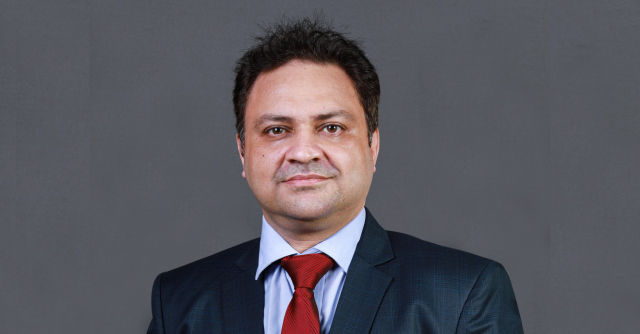
We’re using AI, IoT to simplify customers' life insurance journey: Bharti AXA Life Insurance COO


The insurance sector is undergoing a major transformation, driven by technology that enables insurers to enhance products, improve customer experiences, and reduce costs and risks. In a discussion with TechCircle, Pankaj Gupta, COO of Bharti AXA Life Insurance, explains how the company is utilizing advanced technologies like artificial intelligence (AI), Internet of Things (IoT), and analytics to boost efficiency and personalize services, leading to faster claim settlements. Edited excerpts:
What technologies are you most excited about for your organization and the BFSI sector?
While technologies such as AI, blockchain, IoT, are already changing how the insurance sector operates, we will see those technologies advancing over the next few years and act as game changers. There’s no doubt that AI/ML has already played a role in underwriting, enhancing customer service with chatbots, and streamlining operations for a better customer experience and will continue to do so. Blockchain has revolutionised insurance claims processing, making it faster, more secure, and transparent, while also automating aspects of insurance policies. Internet of Things (IoT) devices will collect data on insured assets, allowing for personalized services and risk assessments, as well as detecting potential risks.

Cloud solutions are already offering scalable data storage and processing, enabling advanced analytics and deeper insights into customer behaviour and risk patterns. Robotic Process Automation (RPA) will further automate repetitive tasks like data entry, allowing staff to focus on higher-value activities. I am bullish on Data Analytics that are and will continue to help insurers identify trends, assess risks accurately, optimize pricing strategies, and create innovative products tailored to customer needs.
With a rise in fraud across sectors, how has your company leveraged AI for fraud detection?
Insurance fraud during onboarding and claims has increased. Insurers are investing in AI/ML for risk profiling, predicting early claims, and video verifications as a first line of defence against fraud. Promoting online payments over cash or checks also helps prevent fraud, while regular communications via SMS, email, and WhatsApp keep customers informed about potential fraud risks.

Is your company's tech budget growing this year? Is that number higher, lower, or the same as the last few years?
We plan to increase our technology investments to enhance customer experiences. As a digitally advanced organization, our budget will see a pull in the upcoming years so as to drive efficiency and optimisation.
Which areas in technology will be your focus this year and why?

We’re already using technologies such as AI/ML, cloud, analytics and IoT will enhance efficiency, reduce costs, and improve customer experiences through personalized services and quicker claim settlements. Our services are offered through self-service portals, mobile apps, and a WhatsApp bot, aiming for a seamless omnichannel experience across all customer interactions.
We will continue to transform processes across the value chain, from pre-sales to onboarding and customer service. We’ve undertaken digital transformation projects using advanced web and mobile technologies, supported by APIs, integration technologies, DevSecOps, and big data management for analytics, AI, and ML.
What is your tech team like in terms of the number of people and their capabilities (skillsets)? Are you planning to expand in the next year by hiring new talent or upskilling existing employees?

My team consists of over 40 members in roles such as Sales Automation, Digital Products, Retail Operations, Underwriting, Enterprise Architecture, IT Infrastructure, Transformation Program, Claims, and Operational Risk. Upskilling is vital in today’s digital age, and we actively support our team in learning new skills and staying updated on industry developments.
Can you please highlight 1-2 cases where technology has helped improve business revenues or the customer experience for the company?
Last year, we launched Project Serv-o-ttam to simplify the online customer experience. The project has been pivotal in enhancing customer experience and streamlining operations. By digitizing eight critical policy servicing journeys, we made it easier for customers to manage their policies. This initiative also provides front-desk employees with a unified view of customer information, resulting in a 33% reduction in service time per customer and a 30% increase in the Net Promoter Score (NPS) for our customer portal, Digiserve.

On a scale of 1 to 10, with 10 being high and 1 being low, where would you place your organization in terms of its digital transformation journey, and how did you achieve that?
I would rate us a 10. While this may sound surprising, as a customer-centric organization, we focus on delivering enriching experiences, evident from our numerous industry awards for digital transformation. By taking small steps towards our mission to simplify insurance, we have made significant progress in our digital journey and continually strive to enhance our service offerings.
When looking at competitor benchmarking, which key technology areas do you see a need to improve?
Having modernized our legacy or core values with a focus on customer centricity, we aim to invest in Generative AI, Data Analytics, and Intelligent Automation to improve operational efficiency and elevate customer and distributor experiences through extreme digitization and hyper-personalization.

What is your tech vision for the next 2-3 years?
My vision is to drive digital transformation by leveraging advanced technologies. We will enhance customer experiences through AI-powered personalization and seamless omnichannel interactions. Embracing cloud-native architectures and automation will improve operational efficiency and reduce costs. We will also prioritize data-driven decision-making by investing in advanced analytics and data science capabilities while strengthening our cybersecurity defenses against evolving threats. Ultimately, our goal is to become a truly data-driven, customer-centric, and agile organization.
